So You Think You Want to Hire a Landscaper
October 4, 2018
When filling out bureaucratic forms with little boxes, I struggle to fit the truth of what I do into the small box labelled “occupation”. Often I’m able to at least write “landscape designer / contractor”, which feels like a near fit. But if the box is too little, I’m forced to merely write “landscaper”. Cringe! To most folks, this label brings to mind the image of a big truck filled with mowers, blowers and a roughneck crew, “No Job Too Small” painted on the side of a trailer. Now, to be clear, I have nothing against the people in that crew. They have a job to do and so do I. It just isn’t the same job and that’s why I cringe.

Where landscapers mow and blow, we observe and create, weed and trim. All that mowing and blowing is a leading cause of noise pollution, especially in some of the most desirable neighborhoods. I prefer the “scr-r-ritch, scratch, scratch, scritch” of Mr. McGregor’s hoe.
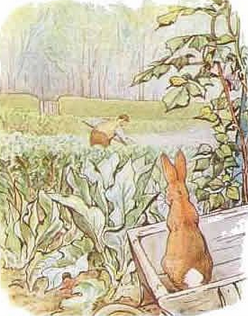
(Thank you Beatrix Potter. You are my hero.)
Besides the auditory onslaught of the dominant vein of my profession, there’s a fundamental difference in approach. For example, when visiting the Portland Japanese Garden with my mom recently, she asked how the bamboo hedge looked so natural yet obviously shortened to be a four foot hedge. It’s what she didn’t see that made her marvel. There were no stumpy ends, no torn leaves and no debris clogging up the greenery. By parting the leaves, I showed my mom the neat cuts the gardener had made just above a node, leaving leafy branchlets to naturally hide the cut. You’ll note I said “gardener”. If a landscaper had been tasked with the job, out would come the hedge trimmer causing a racket and no amount of art, precision or beauty. But, heck, it’d git ‘er done!
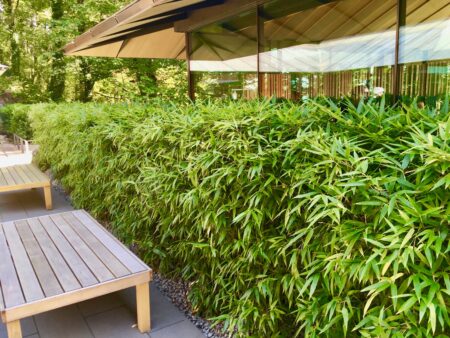
An example of the landscaper approach is the baffling, yet all too common case of the weekly contracted landscaping service at the distillery in our neighborhood. This commercial property had a landscape plan devised by “university trained landscape architects”. It includes a basic mix of native shrubs (because natives are “in” right now) and the ubiquitous, fungus prone arborvitae hedge (which died, was re-planted, then died again). I watched the native Douglas Spiraea grow and anticipated the frothy pink of it’s flowers as the buds began to swell and color when, unfortunately, in came some landscapers with hedge trimmers and blowers in hand. With disregard for the beauty of the blooms and the natural growth of the native shrubs, everything got a harsh whack back, leaving ragged ends, dead twigs and meatball shaped shrubs. An ear-splitting blow off of any soil enriching, habitat creating organic debris, and the job is done. Every Monday I bear witness to this ongoing spectacle of waste and my heart breaks, my mind reals. So unnecessary. Stupid even.
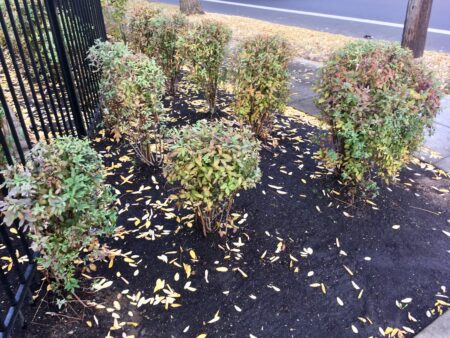
I apologize if this is starting to sound like a rant. I believe people often know themselves by what they are not and I’m all for self-awareness. So, here is my truth:
I’m obsessed with the big picture. Knowledge informs the big picture. When I meet a prospective client for the first time, I want to know who they are, how they want to use their outdoor space, what’s their style, their dreams, their past, present and future. From their land, I ask similar questions, looking at the health of the plants, smelling the soil, observing the lay of the place and what’s happening in the neighborhood. All this information starts to paint a picture of what could be. Only then do I start working on a design.
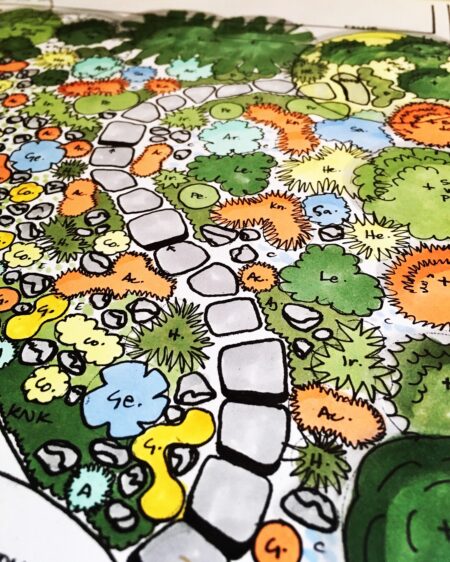
With the design in hand we can start the hard work that makes it all happen. This is where we make our big move on the land. The transformation of what is – be it weedy, overgrown terraces with toxic railroad ties or just too much lawn – to what can be is, honestly, a lot of work. We’re not interested in the quick and cheap slam it out landscaping approach that ignores drainage patterns, persistent weeds, aesthetics. We’re equally uninterested in ego-driven schemes that impose the designer’s will onto the land and cost unnecessarily much to install. We’re smart with our labor, with our clients’ budget and with the land when we work. We build landscapes that are well-informed, that endure weather and frequent use. Our efforts are fueled by the design goal and by our desire to bring you outdoors into Nature in a meaningful way.
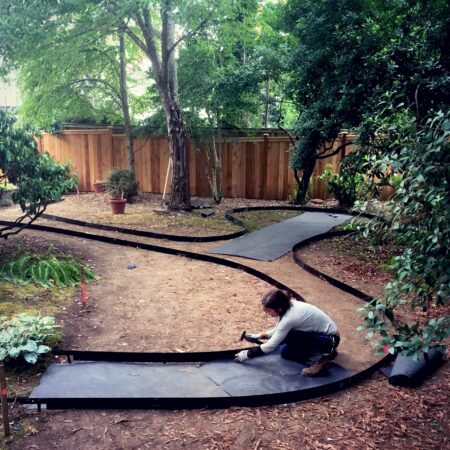
We, Aaron, Jane and I prefer to labor artistically, with thoughtfulness and respect for the unique nature of the plants and the site. This starts with connection. Connection to the land we’re working with, the people who call it home and to the individual plants and their nature are equally important. As in all good relationships, we ask questions before we work, keeping the big picture in mind and our collaboration with Nature. So, when we see the echinacea have finished blooming in our Playful Entry garden, before pulling out our pruners, we ask, “are they still beautiful?”, “will the seed heads feed songbirds?” and we stop to see how lovely the dark cones look with all the other autumnal tones.
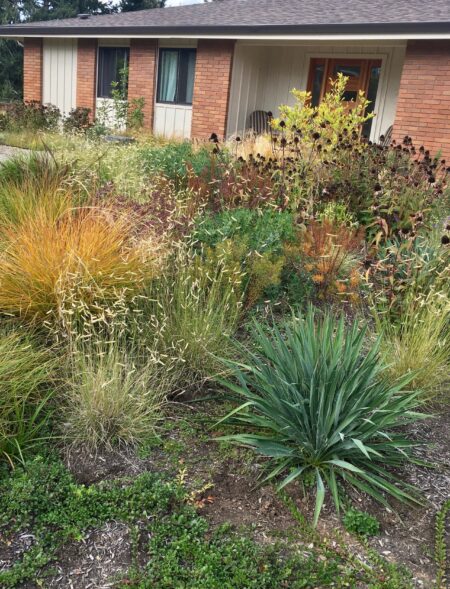
When we orient towards Nature’s Beauty, we work differently than other landscapers. We waste less, save our clients money, are quieter and enjoy more wonderful wildlife visitors – birds, butterflies, native bees, and fat earthworms. Collaborating with homeowners and Nature, we design harmonious garden solutions that, once installed, require significantly less maintenance. Well planned landscapes develop their own settled will. They become wild as in the original meaning of “self willed”. After the hard work of landscape garden making, all that’s needed is monitoring (because the best thing you can put on your garden is your shadow), occasional weeding and once a year trimming and pruning. That means more time to go outside and simply enjoy Nature. Now, if you love that kind of low maintenance beauty, contact us here.
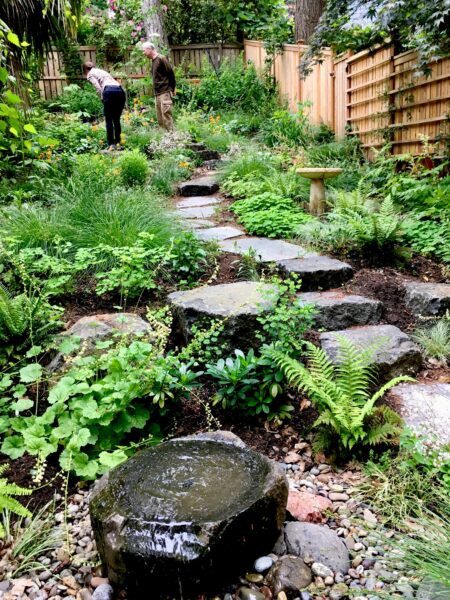

I love your writing!